Eccentrics
The Dobson Air Dart
I wonder if any plans still exist, to allow someone to build this craft today.
Original ad here.
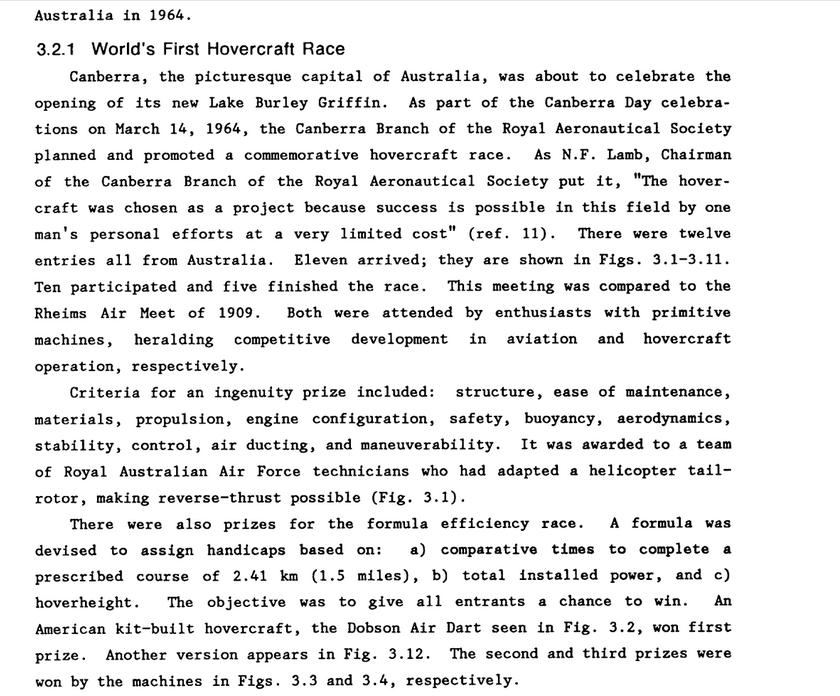
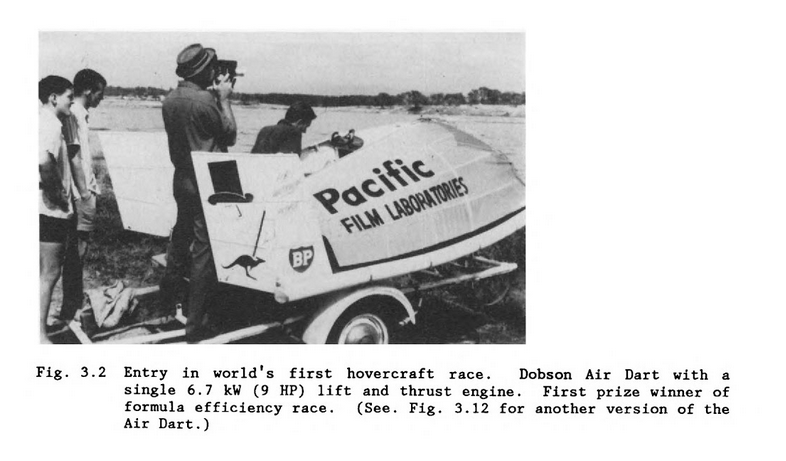
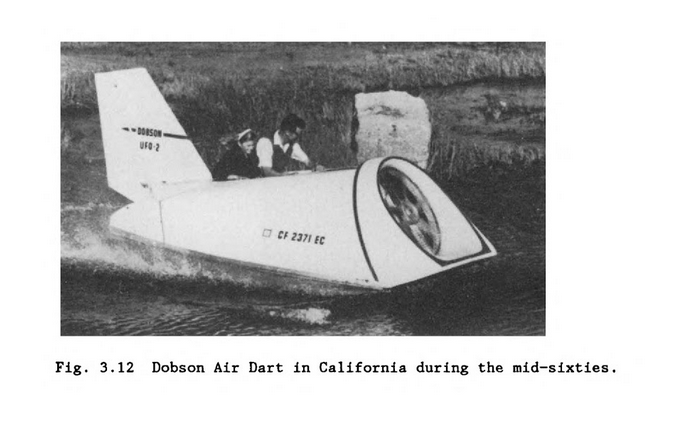
Original article here.
Posted By: Paul - Fri Feb 03, 2017 -
Comments (4)
Category: Eccentrics, Motor Vehicles, Technology, 1960s
Jemima Wilkinson Is Lord
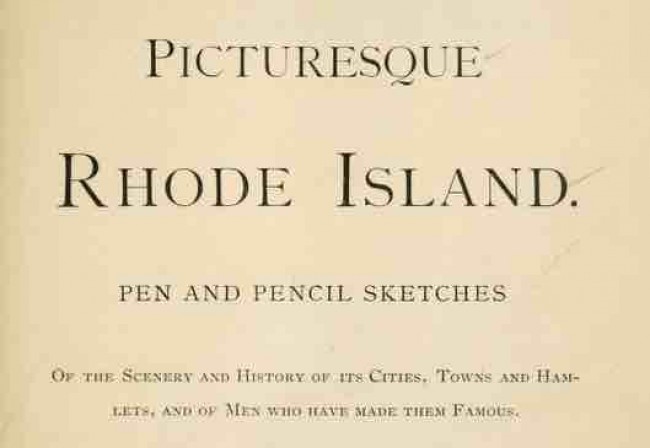
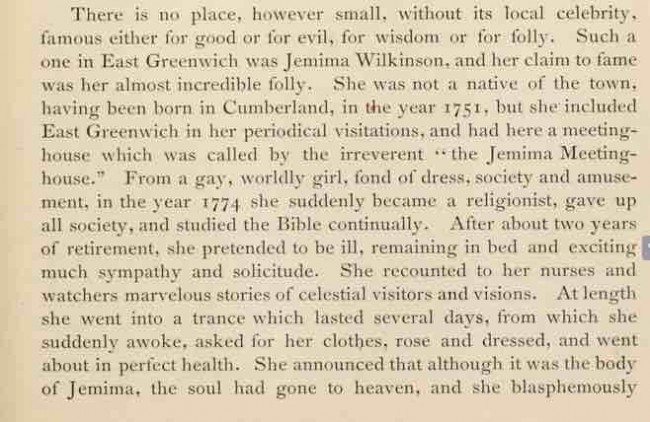
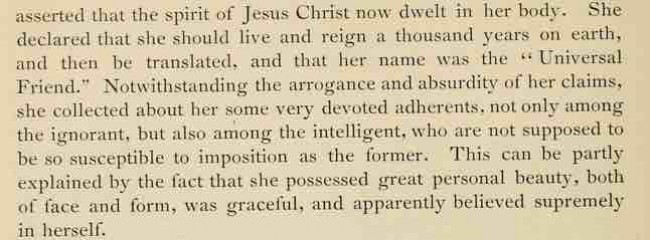
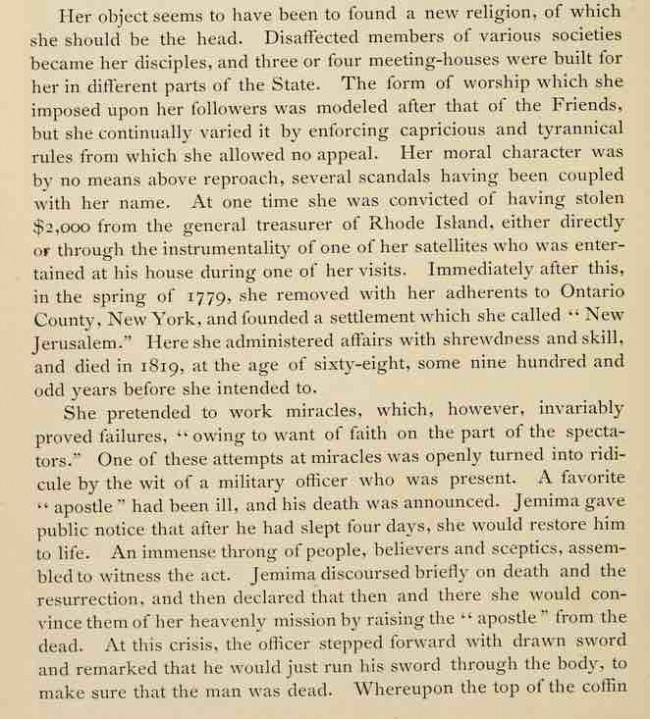

The source.
Posted By: Paul - Sat Jan 28, 2017 -
Comments (2)
Category: Delusions, Fantasies and Other Tricks of the Imagination, Eccentrics, Hoaxes and Imposters and Imitators, Religion, Rituals and Superstitions, Scams, Cons, Rip-offs, and General Larceny, Eighteenth Century
The Ballad of Evel Knieval
Posted By: Paul - Tue Jan 17, 2017 -
Comments (1)
Category: Daredevils, Stuntpeople and Thrillseekers, Eccentrics, Music, 1970s, Motorcycles
Peggy: American Legion “Flying” Parade Car
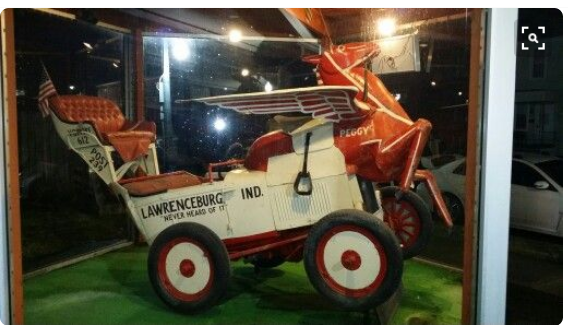
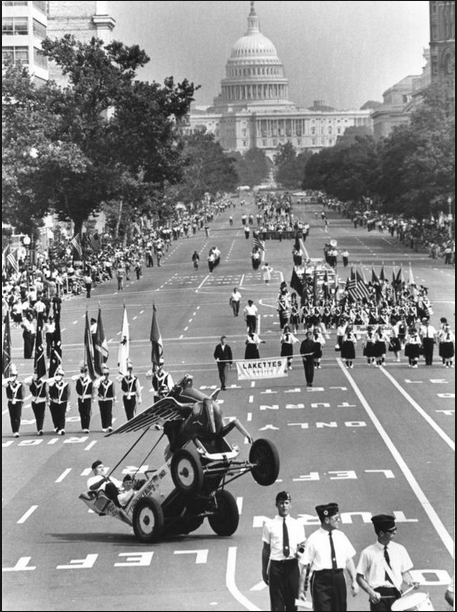
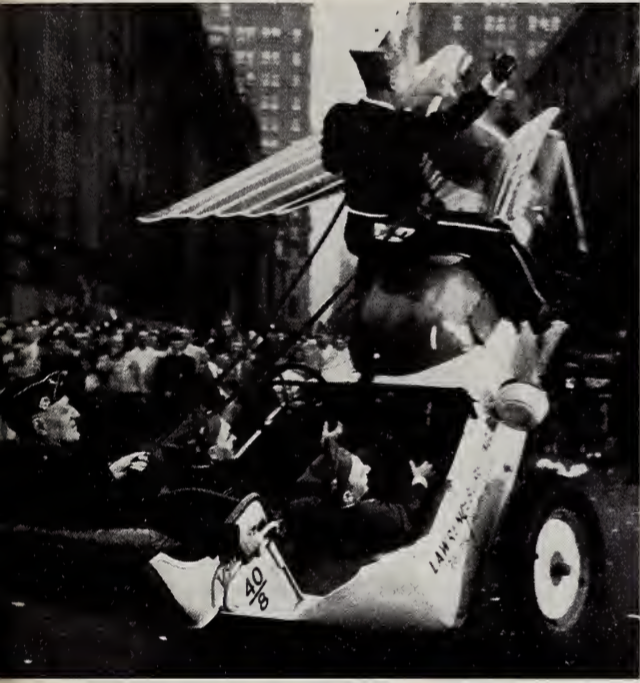
Posted By: Paul - Thu Dec 29, 2016 -
Comments (3)
Category: Cult Figures and Artifacts, Eccentrics, Corporate Mascots, Icons and Spokesbeings, Twentieth Century, Cars
England’s Poorest Baronet
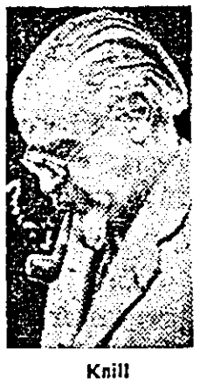
Knill was born into wealth. It was his grandfather, Stuart Knill, who was made the first Knill Baronet in 1893 (official title: Baronet Knill, of The Grove, Blackheath and Fresh Wharf, London). The 1st and 2nd Knill Baronets both served for a time as Lord Mayors of London.
Sir John Stuart Knill became the 3rd Baronet after the death of his father in 1934. However, he never actually registered the title, which meant that his Baronetcy was officially considered to be dormant, but that was a minor detail overlooked by the press.
Knill's fortunes began to go south after World War I. He lost his family's ancestral estate, Knill Court in Herefordshire, and fell back on his knowledge of antiques to make a living, opening an antique shop in Brighton. However, the shop failed to make a profit, so by the mid-1930s he had closed it and began operating a "bric-a-brac stall" in London's Caledonian market. On the weekends he swept streets.
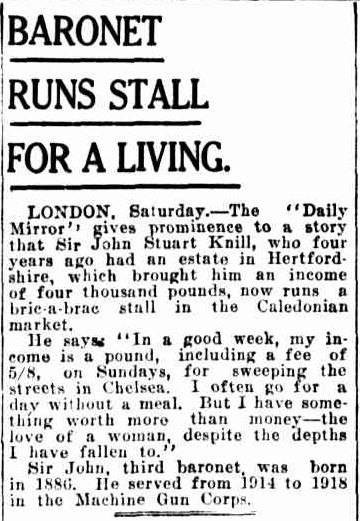
The Burnie Advocate - Apr 12, 1937
A job as a postman followed during the 1940s. His wife, Lady Ruth Evelyn Knill, supplemented the family income by working as a mill girl. Interviewed in 1950, she said, "We've lived hard and now we are down to rock bottom. I'm living up to my name. Of money, we have: Knill."
The Knills earned extra cash by breeding animals in their rented apartment, but due to failure to pay the rent they were evicted in 1951 and moved into public housing.

Sydney Morning Herald - Mar 1, 1951
The next time Knill made headlines was in 1962 when it was widely reported that he was "trying to recoup his lost fortune by hypnotizing his wife so she can win the weekly soccer pool." As reported by UPI:
So far the pursuit of riches in England's national pastime has failed to yield the results they hope for but this has not dampened their enthusiasm...
Both feel that their lack of success may be due to poor reception by Lady Knill.
"It seems to depend on the weather for accuracy," she said. "On a dull day I have a job to 'read' the results. Normally, when he hypnotizes me the TV set appears to be switched on. Sometimes it seems so bright that I have to ask him to tone it down."
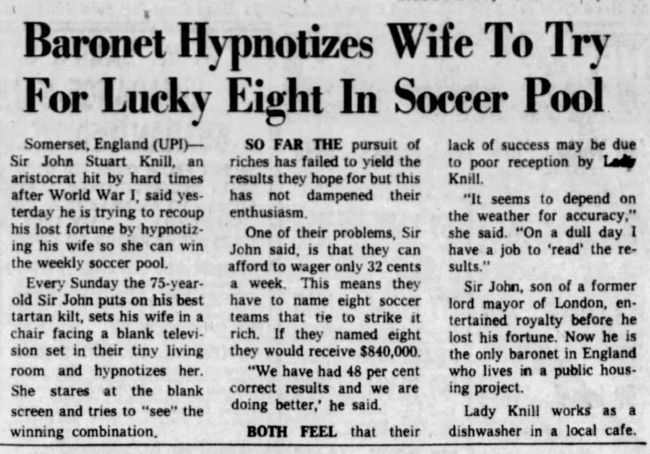
The Indianapolis Star - Mar 10, 1962
Knill died in 1973 at the age of 87. His son John (the 4th Baronet) was also quite a character. He was a long-time campaigner for the preservation of canals and was known around the city of Bath as a local eccentric, "propelling himself in a wheelchair operated by an astonishing system of levers, pulley and - it has to be said - cranks." More info about him here.
Posted By: Alex - Wed Dec 28, 2016 -
Comments (2)
Category: Eccentrics, Royalty
Tiny Town, PA
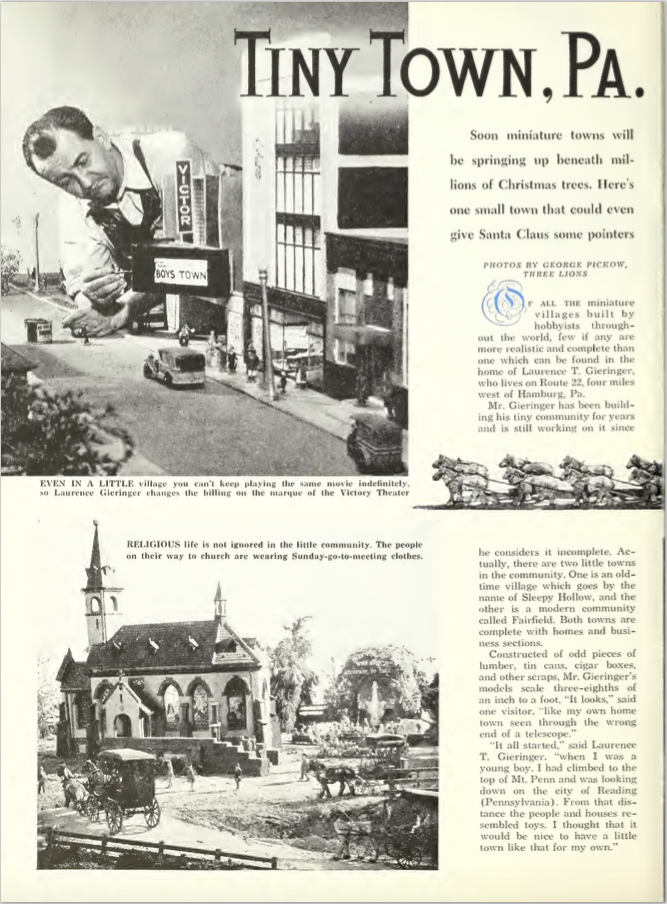
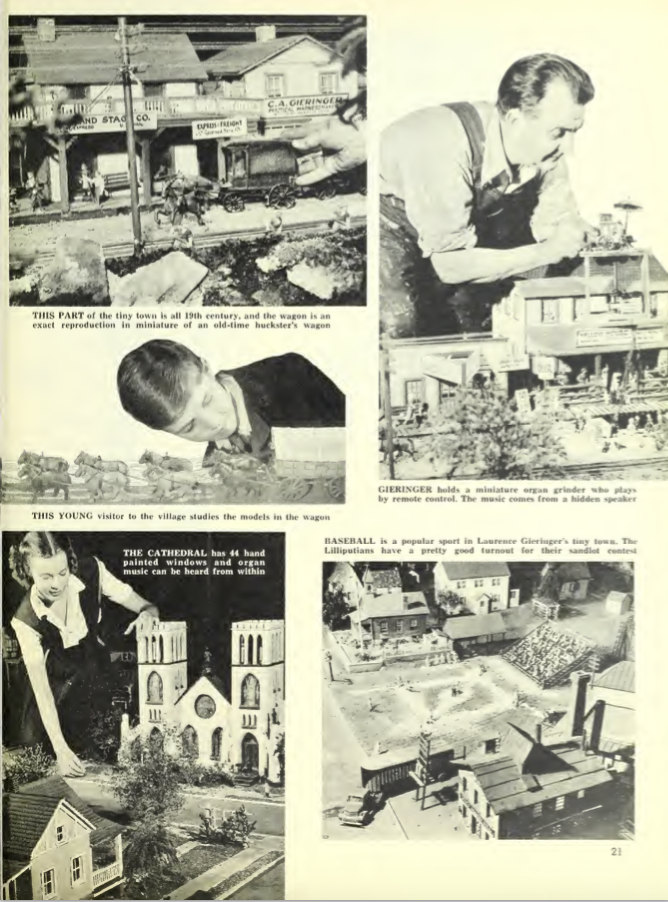
Homepage here.
News article here.
Posted By: Paul - Sat Dec 24, 2016 -
Comments (1)
Category: Eccentrics, Hobbies and DIY, Outsider Art, 1930s
Arthur and Bertha Ferris
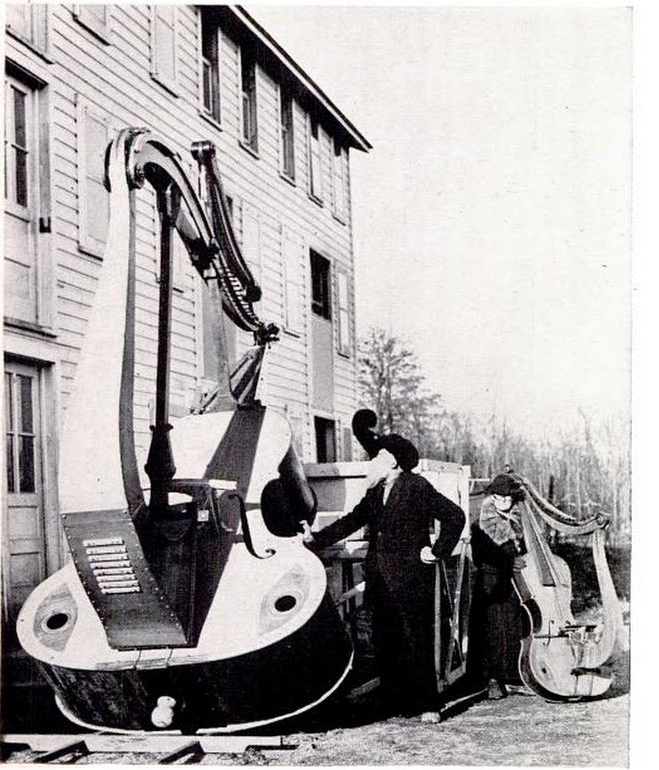
Original pic here.
Two more pics of Ferris here.
The visionary musical instruments of Arthur Kirk Ferris (b. 1871, Madison, Wisc., d. after 1943, New Jersey) represent one of the most extraordinary chapters of creative instrument building in America. In creative partnership with his wife of over four decades, Bertha Bell Hallock (b. 1870, d. after 1943), the Ferrises together devoted their lives to Christian ideals (of the Seventh Day Adventist variety) and to using music to spread the Word. The couple had no children, arguably a natural consequence of Arthur’s advocacy for immaculate conception.
Bertha was not a composer; she was the chief performer in his ensembles and provided her original contribution during ensemble improvisations. While hymns such as “Rock of Ages” and “Abide with Me” were played by members of the Ferris Celestial Orchestra, they also played “tunes of heavenly inspiration;” a practice followed in this recording. Ferris’s music was played on a New York radio station, featured in Ripley’s Believe It or Not show, and written up in Popular Science in 1938. This is the first time they have been played in over 60 years.
Although none of his written compositions survives, the Ferris spirit is amply contained in the twenty or more string instruments made in the 1920s and ‘30s, a dozen of which are found in the Schubert Club Kugler Collection in Minnesota. Awakening the instruments’ dormant daimons took some clambering around the storage warehouse, dusting, tensioning strings, perpetual retuning, and spiritual preparation (to compensate for our lack of true “Biblical character” so important to Arthur). Yet the other-worldly sonorities and exquisite craftsmanship inspired a sense of awe and devotion, whether or not we succeeded in projecting the particular homilies inscribed inside the soundboards.
Ferris’s Big Fiddle (1924) is listed in the Guinness Book of Records as the largest viol in the world, coming in at over 14 feet tall by 6 feet wide. The lowest tones are inaudible to the human ear (at two octaves lower than the lowest piano tones, the vibrations could only be felt when played inside a barn which acted as a giant resonator). But then humans were not the only audience for his work:
It began at 3 o’clock of an afternoon in 1924. Arthur sat by the window of the farm in Ironia (NJ). There was a mist in the field outside, but as Arthur gazed, it lifted and instead of the usual rocks and grass hummocks his eyes fell upon the strangest sight he had ever seen. Hundreds of harps and fiddles of all sizes lay on the green grass.
“Then,” Arthur’s wife recounts, “a voice spoke to him. ‘I’m Gabriel,’ it said, ‘you write this vision and make it plain that people may run and read it. You make these instruments and show these people that the word of God is true.’”
The “voice” told Arthur how to make the instruments… Arthur’s wife says he is “careful about doing what he is told by the unseen.” [The Sunday Call, Newark, NJ, July 7, 1940]
He spent the next 16 months in the Hudson River State Hospital for the mentally ill (apparently committed there after a spat with a fellow Seventh Day Adventist), and from that time on wrote down his dream visions, often between midnight and 7 am. Some were varnish formulas, some were about the future destruction of New York, a greenhouse design, or a beehive-handling machine, or the necessity of Seventh Day Adventists to dress plainly. Yet others concerned instrument design.
The angels communicated plans for 126 string instruments, many of them hybrids between the violin and the harp families, presumably common in the orchestras of heaven. Being a landscape gardener and holder of a varnish patent (was it the sniffing of varnish that led to his visions?), Ferris was familiar with the characteristics of many local trees and the qualities of their wood. Each instrument uses a combination of woods, chosen as much for the Biblical virtues they represent as for their resonating, visual and structural potential. Each instrument of his Celestial Orchestra was also intended for a particular purpose; they were to play only sacred music (although one was permitted to be played for filthy lucre): one was given to a woman who lived a 100% Christian life for one year before and after marriage, and all had their insides densely inscribed with texts (concerning the visions, the materials used, and the truths that would be manifested by playing the instrument well). Names of the instruments included: Horn of Plenty Harp, Thribble Bass, Liberty Harp, David Loot Harp, Giant Loot Harp, Obedience Harp, Prophetic Loot Harp, Baretone, and Suitcase Viol.
Posted By: Paul - Fri Dec 09, 2016 -
Comments (5)
Category: Eccentrics, Music, Nineteenth Century, Twentieth Century
The Bathtub by Bob Reisner (1969)
If you couldn't have the real thing, you could always get the model kit.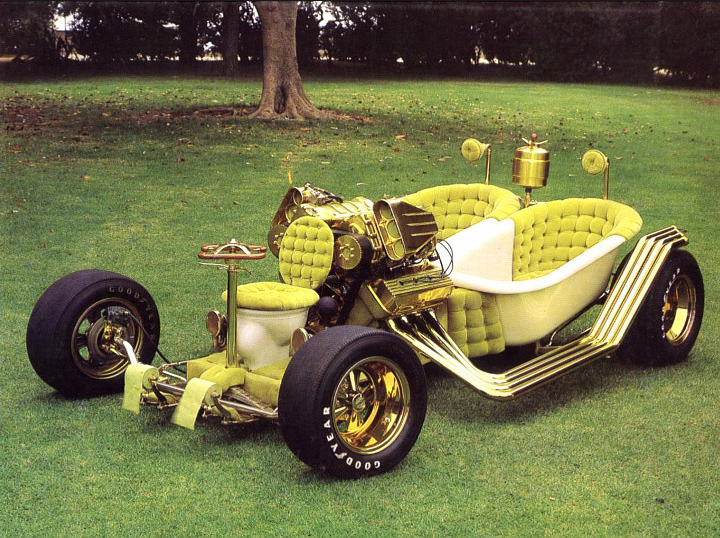
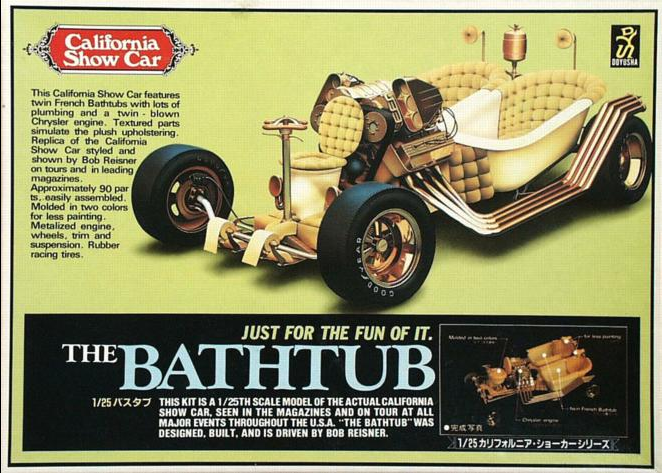
The kit assembled at this site.
Posted By: Paul - Fri Nov 18, 2016 -
Comments (5)
Category: Beauty, Ugliness and Other Aesthetic Issues, Eccentrics, 1960s, Cars
Toe Wrestling
Wikipedia page here.
Posted By: Paul - Sat Nov 12, 2016 -
Comments (0)
Category: Contests, Races and Other Competitions, Eccentrics, Feet
Antonio De Soto Major
We tend to think we have some eccentric politicians today, like the UK's Boris Johnson or, ahem, a certain President-elect. But really, the past had the present beat hollow, and we are proved to be relatively colorless today by comparison.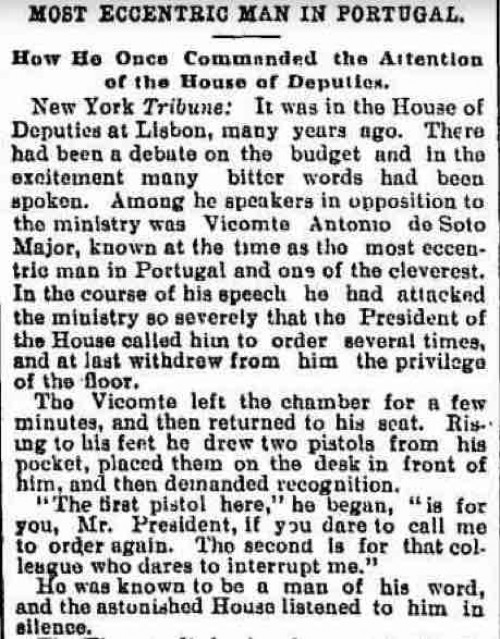
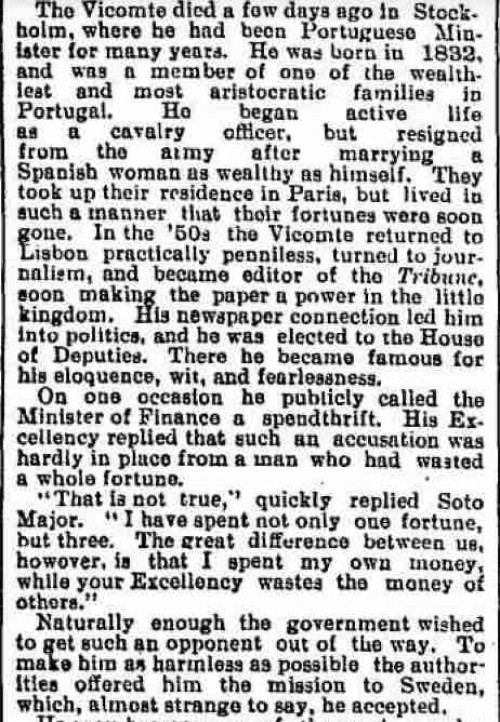
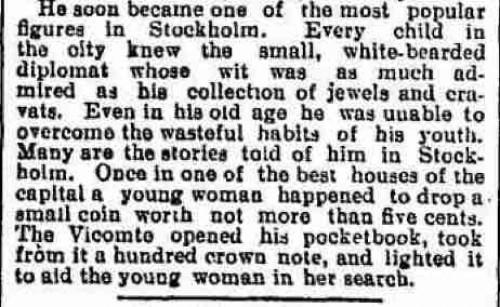
Posted By: Paul - Thu Nov 10, 2016 -
Comments (2)
Category: Eccentrics, Politics, Europe, Nineteenth Century

| Who We Are |
|---|
| Alex Boese Alex is the creator and curator of the Museum of Hoaxes. He's also the author of various weird, non-fiction, science-themed books such as Elephants on Acid and Psychedelic Apes. Paul Di Filippo Paul has been paid to put weird ideas into fictional form for over thirty years, in his career as a noted science fiction writer. He has recently begun blogging on many curious topics with three fellow writers at The Inferior 4+1. Contact Us |




